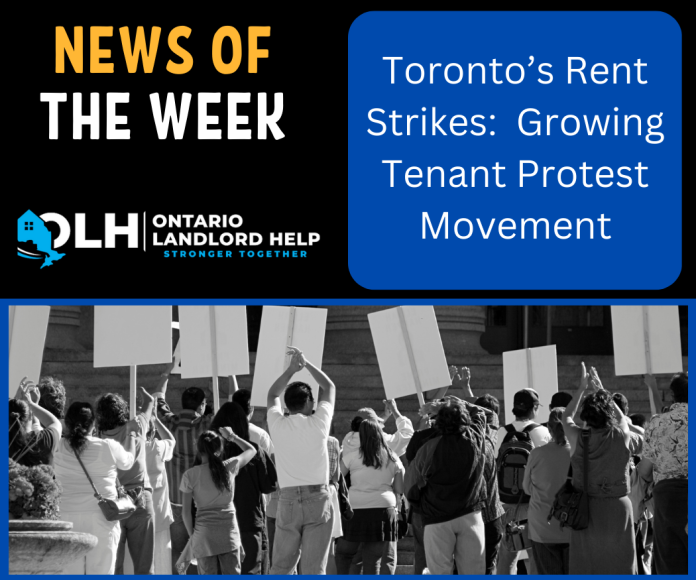1. Introduction
In the face of escalating rental costs in Toronto, rent strikes have emerged as a prominent form of tenant protest. These strikes, increasingly observed across the city, reflect growing tenant frustration and highlight systemic issues within the housing market.
2. Motivations Behind Rent Strikes
- Condition Complaints: Some tenants resort to rent strikes to address persistent issues with building maintenance and habitability.
- Protests Against Rent Increases: More commonly, tenants use strikes as a mechanism to contest rent hikes that exceed the annual limits prescribed by the Ontario government.
3. Ontario’s Rent Increase Guidelines
- 2024 Increase Cap: For the year 2024, the Ontario government permits a maximum rent increase of 2.5% for rent-controlled units. This figure remains unchanged from 2023, following a lower increase of 1.2% in the previous year.
- Above Guideline Increases (AGI): Landlords may apply for higher increases under specific circumstances, such as extraordinary rises in municipal taxes, significant property improvements, or increased security costs.
4. Legal and Procedural Considerations
- Eviction Risks: Tenants participating in rent strikes may receive eviction notices (N4 forms) for non-payment of rent. Tenants have the right to contest these notices and challenge their validity.
- LTB Delays: Eviction processes can be significantly delayed due to a backlog at the Landlord and Tenant Board (LTB). The LTB often prioritizes eviction cases, particularly those involving collective tenant actions.
5. Legal Perspectives
- Samuel Mason’s Insights: Samuel Mason, a tenant rights lawyer, notes that rent strikes are often a response to perceived unjust AGIs and serve as a statement against significant rent hikes. Tenants must be prepared for potential legal consequences, including the risk of eviction.
- Bob Aaron’s Analysis: Veteran real estate lawyer Bob Aaron argues that while tenants are obligated to pay rent as stipulated in their leases, landlords must also adhere to standards of habitability. He critiques the LTB’s handling of rent strike funds and calls for a more efficient resolution process.
6. Current Trends
- Active Strikes: In various Toronto neighborhoods, including the west end and East York’s Thorncliffe Park area, tenants have engaged in prolonged rent strikes. These actions, some lasting over a year, are frequently in response to contentious AGI applications.
7. Community and Organizational Response
- York South-Weston Tenants Union (YSWTU): Chiara Padovani of YSWTU underscores that the prevalence of rent strikes signifies severe tenant discontent. YSWTU provides legal support to tenants and works to ensure that landlords comply with legal obligations, advocating for fair treatment on both sides.
8. Conclusion
The rise of rent strikes in Toronto highlights the pressing issues within the city’s rental market. These actions reflect broader concerns about affordability and tenant rights, emphasizing the need for effective and equitable solutions. As disputes continue to be resolved, both tenants and landlords are encouraged to seek legal guidance and engage in constructive dialogue to address these critical challenges.



